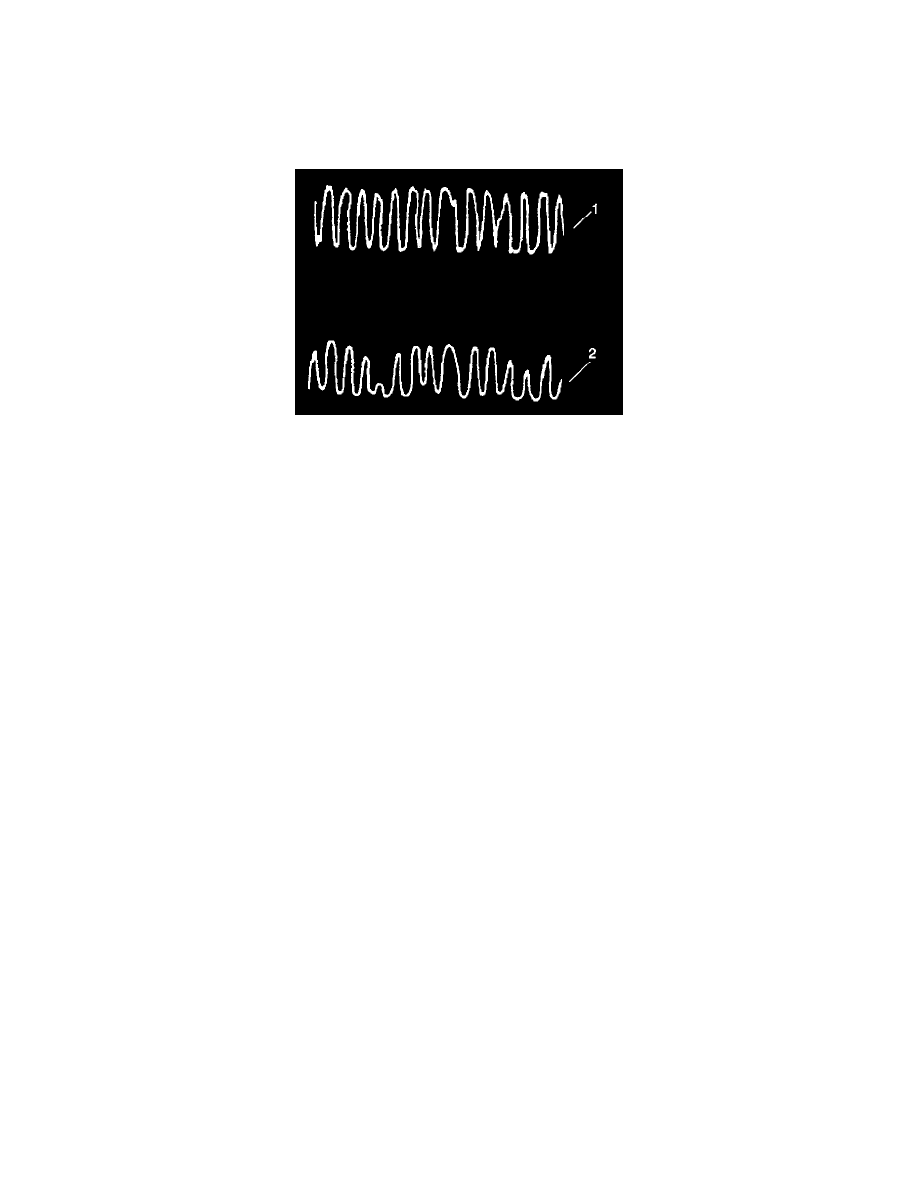Astro Van 2WD V6-4.3L VIN X (2002)

Three-Way Catalyst Storage Capacity
The PCM must monitor the 3-Way Catalyst System (TWC) for efficiency. In order to accomplish this, the PCM monitors the pre-catalyst and
post-catalyst oxygen sensors. When the TWC is operating properly, the post-catalyst (2) oxygen sensor shows significantly less activity than the
pre-catalyst (1) oxygen sensor. The TWC stores oxygen during the normal reduction and oxidation process. The TWC releases oxygen during its normal
reduction and oxidation process. The PCM calculates the oxygen storage capacity using the difference between the pre-catalyst and post-catalyst oxygen
sensor voltage levels.
Misfire Monitor Diagnostic Tests
Whenever the sensor activity of the post-catalyst (2) oxygen sensor nears the sensor activity of the pre-catalyst (1) oxygen sensor, the catalysts efficiency
is degraded.
Aftermarket HO2S characteristics may be different from the original equipment manufacturer sensor. This may lead to a false pass or a false fail of the
catalyst monitor diagnostic. Similarly, if an aftermarket catalyst does not contain the same amount of precious metal content as the original pan, the
correlation between oxygen storage and conversion efficiency may be altered enough to set a false DTC.
Torque Management
Torque management is a function of the PCM that reduces engine power under certain conditions. Torque management is performed for the following
reasons:
1. To prevent over-stressing the powertrain and driveline components
2. To prevent damage to the vehicle during certain abusive maneuvers
3. To reduce engine speed when the IAC is out of the normal operating range
The PCM monitors the following sensors and engine parameters in order to calculate engine output torque:
^
The air/fuel ratio
^
The Mass Air Flow (MAF) sensor
^
The Manifold Absolute Pressure (MAP) sensor
^
The Intake Air Temperature (IAT) sensor
^
The spark advance
^
The engine speed
^
The Engine Coolant Temperature (ECT) sensor
^
The A/C clutch status
The PCM monitors the torque converter status, the transmission gear ratio, and the engine speed in order to determine if torque reduction is required.
The PCM retards the spark as appropriate to reduce engine torque output if torque reduction is required. The PCM also shuts OFF the fuel to certain
injectors in order to reduce the engine power in the case of an abusive maneuver.
The following are instances when engine power reduction is likely to be experienced:
^
During transmission upshifts and downshifts
^
During heavy acceleration from a standing start
^
When the clutch pedal is released too quick under a heavy load (6.0L only)
^
When one set of drive axles loses traction while the other set of drive axles are not moving (4WD only and in 4WD low)
^
If the IAC is out of the normal operating range, except 6.0L
^
When the driver is performing harsh or abusive maneuvers such as shifting into gear at high throttle angles or shifting the transmission from
reverse to drive to create a rocking motion
The driver is unlikely to notice the torque management actions in the first 2 instances. The engine power output is moderate at full throttle in the other
cases.
The PCM calculates the amount of spark retard necessary to reduce the engine power by the desired amount. The PCM disables the fuel injectors for
